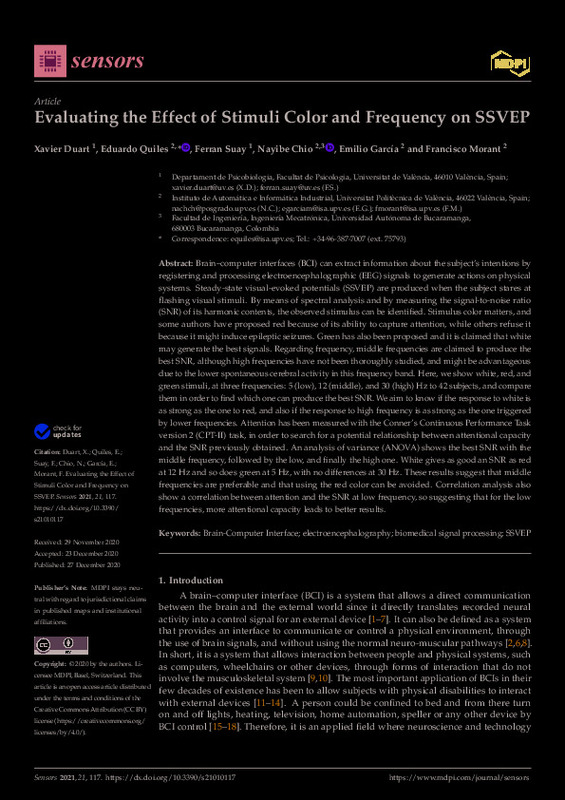JavaScript is disabled for your browser. Some features of this site may not work without it.
Buscar en RiuNet
Listar
Mi cuenta
Estadísticas
Ayuda RiuNet
Admin. UPV
Desde el lunes 3 y hasta el jueves 20 de marzo, RiuNet funcionará en modo de solo lectura a causa de su actualización a una nueva versión.
Evaluating the Effect of Stimuli Color and Frequency on SSVEP
Mostrar el registro completo del ítem
Duart, X.; Quiles Cucarella, E.; Suay, F.; Chio, N.; García Moreno, E.; Morant Anglada, FJ. (2021). Evaluating the Effect of Stimuli Color and Frequency on SSVEP. Sensors. 21(1). https://doi.org/10.3390/s21010117
Por favor, use este identificador para citar o enlazar este ítem: http://hdl.handle.net/10251/202677
Ficheros en el ítem
Metadatos del ítem
| Título: | Evaluating the Effect of Stimuli Color and Frequency on SSVEP | |
| Autor: | Duart, Xavier Suay, Ferran Chio, Nayibe | |
| Entidad UPV: |
|
|
| Fecha difusión: |
|
|
| Resumen: |
[EN] Brain-computer interfaces (BCI) can extract information about the subject's intentions by registering and processing electroencephalographic (EEG) signals to generate actions on physical systems. Steady-state visual-evoked ...[+]
|
|
| Palabras clave: |
|
|
| Derechos de uso: | Reconocimiento (by) | |
| Fuente: |
|
|
| DOI: |
|
|
| Editorial: |
|
|
| Versión del editor: | https://doi.org/10.3390/s21010117 | |
| Tipo: |
|









